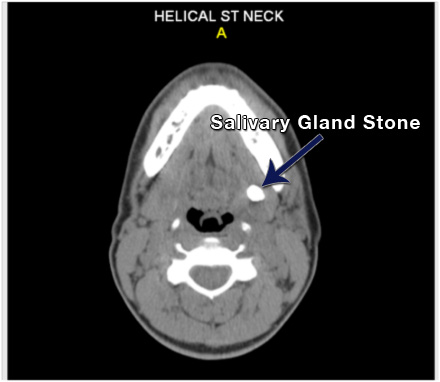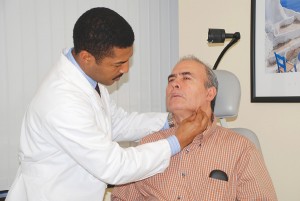- India Medical Mission 2018 - November 1, 2018
- Sleep Disorders: Sleep Apnea and Upper Stimulation Therapy - August 25, 2015
- The Naked Vocalist Podcast Featuring Dr. Reena Gupta - May 27, 2015
- New Therapy for Sleep Apnea – First Sleep Pacemaker placed in California at Osborne Head and Neck Institute. - December 12, 2014
- Boxer’s Ear: Can your ear explode? - December 12, 2014
- Nose Picking (Rhinotillexis) and Septal Perforations: Why I should stop picking my nose…? - November 24, 2014
- Deviated Septum and Septal Perforation - July 28, 2014
- Hereditary Hemorrhagic Telangiectasia: Nasal Septal Perforation Repair - June 25, 2014
- Dr. Mantle recognized at the Beverly Hills Medical Science Academy Awards - May 8, 2014
- Commonly Misdiagnosed Pathologies: Arteriovenous Malformations - April 9, 2014
How are salivary gland stones diagnosed?
Question: I had a consultation for swelling in my right cheek that comes and goes when I eat sour foods. So times it is painful and the swelling can last from a couple hours to a few days. I think there may be something wrong with my salivary gland and from reading your website I think I may have a salivary gland stone. How can I tell for sure if I have a salivary gland stone?

Discussion: Swelling of the salivary gland that fluctuates with eating is a common symptom associated with salivary gland stones. It is more commonly associated with food with high acidic value such as citrus and peppery foods. In response to this stimulus, your brain sends a signal to the salivary glands to contract rapidly sending saliva rushing into the mouth through the salivary gland duct. If there is a salivary gland stone obstructing the flow of saliva the gland swells with back pressure causing pain. The best way to make the diagnosis is with a CT Scan of the salivary glands. Salivary stones contain a lot of calcium deposits and tend to light up brightly within the salivary gland on CT imaging. Some stones however do not show up on CT scan because of low calcium content and are best diagnosed with sialendoscopy where they can be removed simultaneously.
Key Points:
- Best Screening Test for Salivary Stones– CT Scan
- Best Study/Procedure Diagnosis– Sialendoscopy
- Best Treatment Option– Sialendoscopy can be diagnostic and therapeutic
For more information about Dr. Ryan Osborne or salivary stones, visit http://www.parotid.net



